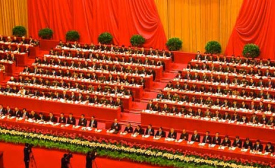pd evaluation
Having recently returned from the International Studies Association (ISA) conference in Toronto, I wanted to share some thoughts with the PD community, and particularly the scholars who for some reason or other couldn’t attend.
These are exciting days for those of us who teach and practice public diplomacy. Aimed at establishing mutually beneficial relationships between governments (as well as non-governmental organizations) and citizens of foreign nations, our field is viewed as transformative by some, while somewhat idealistic by others.
Since the beginning of the 21st century, China has been a rising star in the arena of public diplomacy. Its PD campaign, coordinated by the Ministry of Foreign Affairs, involves fourteen separate Departments, including the United Front Work Department, the Ministry of Commerce, the Ministry of Culture, and the General Administration of Press and Publication.

Since the beginning of the 21st century, China has been a rising star in the arena of public diplomacy. Its PD campaign, coordinated by the Ministry of Foreign Affairs, involves fourteen separate Departments, including the United Front Work Department, the Ministry of Commerce, the Ministry of Culture, and the General Administration of Press and Publication. [1] The colossal campaign aims to brand China as a responsible, peace-loving, and culturally sophisticated nation.
For practitioners of public diplomacy, the ability to accurately measure the effectiveness of PD has often been described as “the holy grail.” Yesterday at the Heritage Foundation, Under Secretary for Public Diplomacy and Public Affairs Tara Sonenshine spoke about the necessity of public diplomacy and the metrics being used and developed for its evaluation.







